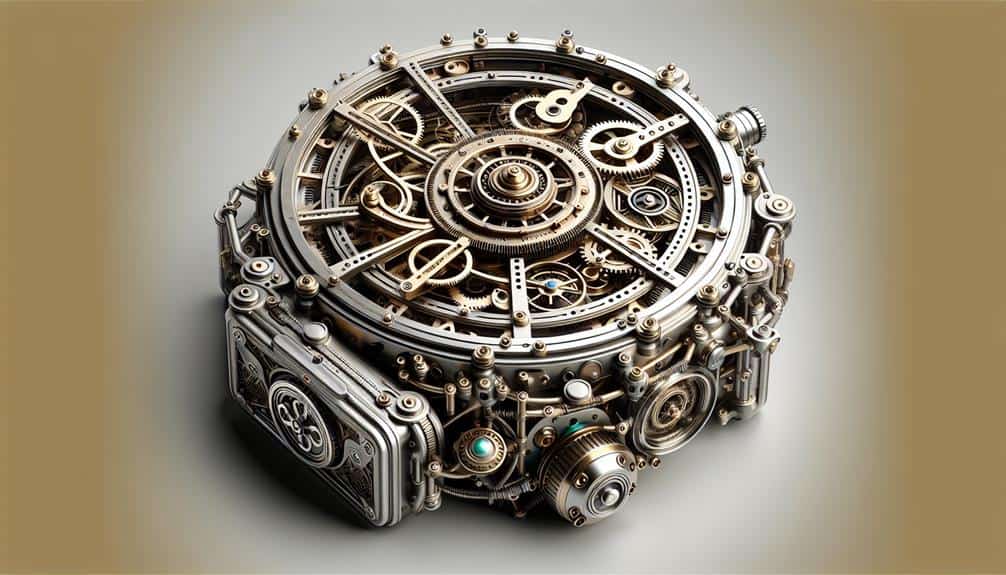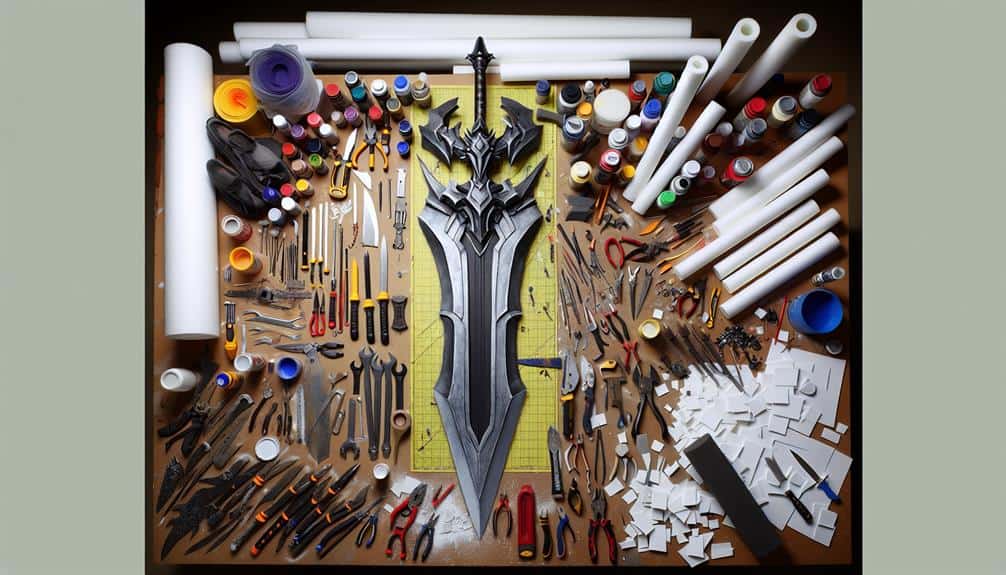Imagine bringing your cosplay or theatrical props to life with simple yet impactful movements that captivate your audience. From adding a flickering light to a wand to creating a prop that unfolds dramatically, the possibilities are endless when it comes to incorporating movable parts into your creations.
By following a few key steps and guidelines, you can elevate your props to a new level of realism and engagement. But how exactly can you make sure these movable parts function seamlessly and effectively?
Key Takeaways
- Understand mechanism basics like hinges and gears for varied prop movements.
- Select durable materials that balance quality and cost-effectiveness.
- Integrate functional design elements for interactive and engaging props.
- Employ secure fastening techniques and regularly test for smooth operation.
Understanding the Mechanism Basics
To create props with movable parts, understanding the mechanism basics is essential for ensuring smooth functionality and realistic movement. When delving into mechanism types, familiarize yourself with the various movement mechanisms that can bring your props to life.
For instance, simple mechanisms like hinges can enable basic movements such as opening and closing, while more complex options like gears and pulleys allow for intricate motions like rotation and lifting.
Exploring movement mechanisms opens a world of possibilities for your prop-making endeavors. By grasping how different mechanisms operate, you can strategically choose the most suitable one to achieve your desired effect. Understanding the principles behind these mechanisms empowers you to troubleshoot any issues that may arise during the construction process, ensuring that your props function seamlessly.
Choosing the Right Materials
When selecting materials for your prop-making project, consider the durability and flexibility required to bring your design to life. Material durability is important to make sure your prop withstands repeated use or handling. Opt for sturdy materials like high-quality woods, metals, or durable plastics. Cost effectiveness is also important; balance quality with affordability by exploring different options and suppliers.
Safety considerations should be a top priority when choosing materials. Make sure that the materials you select are non-toxic, especially if your prop will be handled frequently or by children. Additionally, consider any sharp edges or potential hazards that could arise from the materials chosen.
Aesthetic appeal is another key factor to keep in mind. The materials you choose should align with the overall look and feel of your prop. Consider textures, colors, and finishes that will enhance the visual impact of your design.
Incorporating Functional Designs
Consider integrating movable parts into your props to enhance their functionality and interactive appeal. When incorporating functional designs, aim to achieve a balance between practicality and aesthetics. To create props with functional aesthetics, think about how each movable part can serve a purpose while also adding to the overall visual appeal of the prop.
Implement interactive features that engage your audience and add an element of surprise or delight. For example, you could design a prop with hidden compartments that can be revealed by moving a specific part. This not only enhances the functionality of the prop but also creates a memorable experience for those interacting with it.
When designing movable parts for your props, pay attention to the mechanics involved. Make sure that the parts move smoothly and securely, allowing for seamless interaction. By focusing on both functional aesthetics and interactive features, you can create props that aren't only visually appealing but also engaging and memorable for your audience.
Securing Movable Parts Effectively
Ensuring the stability of movable parts in your props is essential for their functionality and longevity. Proper fastening techniques are vital in securing these components effectively. When attaching movable parts, opt for methods like screws, bolts, or hinges, depending on the prop's design. Utilizing quality fasteners that match the material of your prop will enhance durability and prevent accidental movement.
To secure movable parts effectively, consider reinforcing joints with additional support structures like brackets or adhesive bonding for extra strength. This will help distribute the stress evenly and minimize the risk of parts coming loose during use. Additionally, integrating locking mechanisms such as clasps or latches can further enhance stability and prevent unintended shifts.
When fastening movable parts, ensure that the connections are tight but not overly strained, as this could lead to premature wear and tear. Regularly inspecting and tightening fastenings will help maintain the integrity of your props over time. By employing proper fastening techniques and strategies to prevent accidental movement, you can create props with reliable and long-lasting movable parts.
Testing and Refining Movements
To refine the movements of your props effectively, meticulously test each movable part for smooth operation and pinpoint areas for improvement. Start by examining the range of motion for each movable component. Make certain that the movements are fluid and without any jerky or stuck points. If you encounter any issues, investigate troubleshooting techniques to identify the root cause. Check for any obstructions or misalignments that might hinder smooth operation. Lubricate moving parts to reduce friction and enhance movement optimization.
Additionally, assess the speed and precision of the movements. Are the actions of the movable parts aligned with your intended design? Make adjustments as needed to achieve the desired effect. Sometimes, minor tweaks in positioning or tension can make a significant difference in the overall performance of your prop. Don't hesitate to experiment with different configurations to find the best setup. Through meticulous testing and refinement, you can elevate the quality of your prop's movements and create a more immersive experience for your audience.
Frequently Asked Questions
How Do You Ensure That the Movable Parts of a Prop Are Safe for Use by Actors and Performers?
To guarantee the safety of movable prop parts for actors, conduct a thorough safety inspection before use. Provide detailed training to actors on how to handle props safely and effectively. Prioritize safety to enhance performances.
Are There Any Legal or Safety Regulations to Consider When Adding Movable Parts to Props?
When adding movable parts to props, prioritize regulatory compliance with safety standards. Consider legal obligations to protect actors and performers. Prioritize safety checks and thorough testing to meet industry guidelines for a successful production.
What Are Some Common Challenges or Pitfalls to Avoid When Incorporating Movable Parts Into Props?
When incorporating movable parts into props, you must navigate design challenges and pitfalls. Validate proper mechanics for smooth operation. Choose materials wisely for durability. Prioritize user experience to create props that captivate and impress.
How Do You Handle Repairs or Maintenance for Props With Movable Parts During a Production?
"Got your back on prop maintenance. Follow repair guidelines diligently, set a maintenance schedule. Prioritize actor training for safe handling. Incorporate safety precautions. With attention to detail, your props will shine on stage."
Are There Any Special Considerations for Props With Movable Parts When It Comes to Storage and Transportation?
When considering storage solutions and transportation logistics for props with movable parts, prioritize durability and accessibility. Sturdy containers or cases can safeguard delicate mechanisms, while easy access guarantees smooth handling during both storage and transport.



